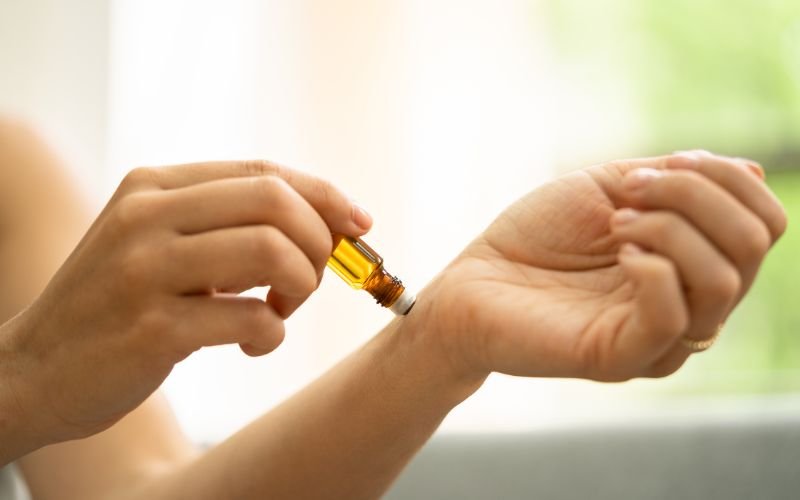CBD is short for “cannabidiol”, one of the many cannabinoids found in the hemp plant along with THC, CBN and CBG.

CBD is winning over more and more consumers for its many benefits. It can be found in many forms, including CBD oil, capsules, cannabidiol-based creams or balms, e-liquids and even food products that you can find on cannabis online shops such as Justbob.
So how do you get the best effects from CBD, depending on how you take it? What is the recommended daily dose of CBD? Is it possible to use CBD as a cure? Are there any health risks associated with using this molecule derived from hemp (cannabis sativa L)? All the answers can be found in our guide to using CBD.
A reminder of what CBD is and its benefits
CBD is short for “cannabidiol”, one of the many cannabinoids found in the hemp plant along with THC, CBN and CBG. CBD is the second main constituent of industrial hemp (Cannabis Sativa).
Good to know: Unlike TetraHydroCannabinol (THC), CBD has no psychotropic effects and is not addictive.
On the contrary, CBD offers several benefits:
- Promotes good sleep ;
- Reduces anxiety and stress;
- Provides relaxation and well-being;
- Moisturises hair and skin;
- Acts as a natural painkiller;
- Relieves skin inflammation;
- Slows oxidation and protects against free radicals;
- Alleviates muscular, arthritic and chronic pain.
Regardless of the form used (liquid or solid), CBD allows you to benefit from its many beneficial properties for the body and mind. This is because it interacts with the endocannabinoid system’s receptors, a complex system that maintains your body’s equilibrium (homeostasis).
What are the methods for using CBD?
There are many different ways to use legal CBD, cannabis light, and many other products. Here are some of the best-known and most popular uses.
By sublingual route
Consuming CBD sublingually is the most common way to use cannabidiol in its liquid form.
Good to know: This method of administration is possible with CBD oil, a product consisting of a vegetable carrier oil and different concentrations of cannabidiol.
It’s easy to use: place a few drops of CBD oil under the tongue and hold for 60 to 90 seconds before swallowing. The compounds are absorbed by the sublingual gland and sent directly into the bloodstream.
This absorption method is so popular because it allows CBD to be assimilated more quickly and without being broken down by digestive enzymes. The molecules reach the bloodstream without passing through the digestive system!
Sublingual CBD oil is also a rapid and easy method of administration. The only drawback? Some consumers would prefer its strong taste.
By ingestion
If the herbaceous taste of hemp bothers some consumers, it can be ingested with a drink or in a dish. Whether in liquid form (CBD oil) or solid form (hemp flowers or even concentrates), cannabidiol can be added to a culinary preparation to reduce the taste. There are also ready-made food products that contain CBD.
For example, you can opt for a cannabidiol infusion by infusing a few grams of CBD flower or a portion of ready-made infusion in boiling water after adding a fatty substance (milk, butter, oil, etc.). This will allow the cannabidiol to develop all its effects effectively, as CBD is lipophilic.
You can also add CBD oil or crumbled flowers to your recipes, whether savoury or sweet. Again, by adding a fatty substance, you can create wellness recipes where the herbaceous taste of hemp no longer bothers you. But be careful not to overheat the CBD: prefer cold recipes such as vinaigrettes or limit the cooking temperature to 180° to avoid altering the molecule and reducing its effects.
However, this method of using CBD (infusion, CBD food products, etc.) lengthens the waiting time between absorption of the cannabidiol and the first effects felt. This is because CBD has to pass through the digestive system before it can take effect.
Good to know: You can also find CBD products that can be consumed directly: CBD chocolate, capsules with hemp extract, CBD drinks, etc.
By inhalation, vaporisation and vaping
Vaporising CBD helps you to enjoy all its benefits through inhalation. You can do this using specific devices such as vaporisers or electronic cigarettes.
- Warning: CBD oil cannot be smoked or vaped, so choosing a suitable product is essential.
Vaping and inhalation are two popular methods of use, as they improve the bioavailability of CBD. The effects are felt much more quickly by passing directly through the lungs and respiratory system than when using cannabidiol oil or edible products.
Vaping also reduces dependence on cigarettes. It is, therefore, an excellent alternative to smoking.
Topically or dermally
CBD can also be used topically, locally or massaged locally to the skin. Several cannabidiol-based cosmetics, including CBD creams, balms and oils, are available for this purpose.
A few drops of CBD oil can be added to your cosmetics or applied directly to the skin. For example, this is practical for occasional use to relieve a sore muscle.
Good to know: for cannabidiol massages, there are specially designed CBD oils that are drier and easier to use.
CBD can also be applied to the skin to treat specific skin problems such as acne and eczema. Cannabidiol-based skin creams offer moisturising, regenerating and soothing properties while regulating sebum. They protect the epidermis by helping to reconstitute the hydrolipidic film, a natural barrier against daily aggressions.